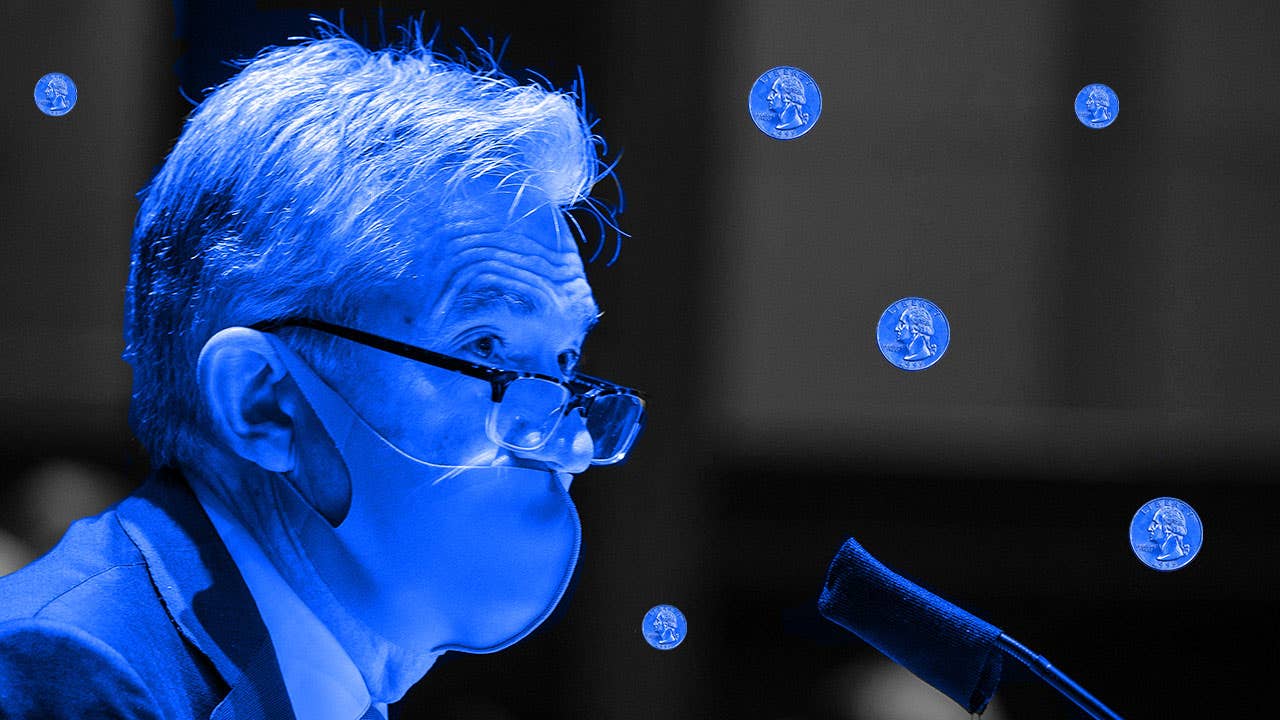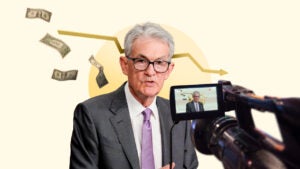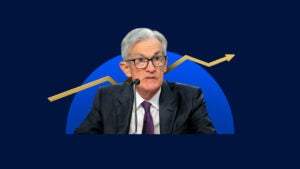Preview of the Fed meeting: 4 big questions in the economic battle vs. coronavirus

The Federal Reserve and the U.S. economy are at a crossroads. With coronavirus cases continuing to soar, the direction of the economy is as uncertain as ever. The Fed’s meeting on July 28-29 will not only assess the economy and the central bank’s policy of near-zero interest rates but also its program of bond purchases and long-term strategy.
Economists widely believe the Fed will leave rates unchanged. After all, at the Fed’s June meeting, Fed chairman Jerome Powell quotably said the Fed was “not even thinking about thinking about raising rates.” It was only in March when the Fed slashed rates to zero and began unveiling a series of 13 lending facilities to get credit moving through the economy.
While a bump in rates seems off the table for the foreseeable future, the Fed will evaluate what else it’s going to do to help rescue the economy as the crisis continues into the second half of the year.
Here are four big questions facing Fed policymakers as they meet in Washington.
1. Where is the U.S. economy headed now?
Today the economy is at a critical juncture, having rebounded quickly from some of the worst of the crisis, though no one’s quite sure how much higher it can bound from here. That’s due to the persistence of the coronavirus, which creates a conundrum for the Fed. While it can apply monetary solutions to the economy, it has no tools to address a key driver of the recession.
And before it can act (on what it can control), it must have the economic data.
Unemployment has bounced sharply off its worst levels, as governments re-opened the economy and people went back to work at various stages across the U.S. Non-farm payrolls swelled by 4.8 million jobs in June, helping push unemployment down to 11.1 percent – a sharp improvement from the peak levels of 14.4 percent unemployment in April.
Recent survey data from the Atlanta Fed suggests that GDP for the second quarter will be down about 35 percent. While that number is disturbing, the real question is where it’s headed.
Goldman Sachs estimates that third-quarter GDP will spring 25 percent higher, but in early July it reduced its estimates from 33 percent growth on weak spending for services and ongoing lockdowns in various geographies due to surging COVID cases. Yet the investment bank held firm on its 8 percent growth projection for the fourth quarter and actually boosted its first quarter 2021 projection from 6.5 percent to 8 percent, citing hopes for a vaccine among other things.
While the economy has rebounded, the rate of improvement seems to have slowed somewhat from its earliest days, and some industries, such as hospitality, lodging and air travel, will likely face severe headwinds as long as COVID-19 remains a serious threat.
While opinions vary on how quickly the economy can return to normal, what almost everyone appears to agree on is that it will take until at least 2021, though some are expecting a much slower rise.
2. What are the Fed’s next steps?
As it’s examining the data, the Fed can craft a policy response, though it’s already rolled out perhaps the boldest monetary response ever in near-record time starting in March. Besides slashing rates and amping up its repurchases of Treasury and corporate bonds, the Fed has unleashed lending facilities to help push liquidity back into other areas such as small business.
In short, the Fed has pledged to do whatever is needed to keep the recovery on track, regardless of which way the coronavirus and economy pivot.
Of course, investors will be keyed into the Fed’s forward guidance, though at this stage of the recovery guidance is all about inundating markets with liquidity.
“As the virus affects the economy so directly and it is impossible to predict future spikes and the availability of a vaccine or cure, the Fed will most likely commit to ‘whatever it takes as long as it takes’ to avoid any disruptions in liquidity and continue to support the faltering economy,” says David Pascale, a senior vice president at George Smith Partners in Los Angeles, which arranges financing for real estate investments.
Still, some Fed officials have previously discussed the possibility of more formal guidance that helps the market set expectations, especially surrounding the issue of how long rates will be kept at such extraordinarily low levels.
The Fed is already planning to stand firm on rates through 2022, and the shape of the recovery may dictate further responses. Unexpected data may drive the Fed to become more aggressive in its repurchases or it may undertake “yield curve control,” a process of keeping rates at the Fed’s target level all along the borrowing curve by strategically buying Treasurys.
“The Fed is contemplating additional policy moves such as yield curve control, but don’t expect any announcements at this meeting,” says Greg McBride, CFA, Bankrate chief financial analyst. “Before taking action, the Fed will need greater visibility on the status of the economic recovery. The recent surge in coronavirus cases and the looming expiration of federal unemployment benefits throws the recovery into murky waters.”
While the Fed has seemed reluctant to undertake further action as it awaits the data, the central bank has shown that it’s not afraid to go full bore if it thinks that’s what the situation demands.
Pascale expects the Fed to unleash yield curve control later this year. “The Fed will then be committing to be the ‘buyer of last resort’ of massive amounts of those Treasurys,” he says.
3. Will the Fed push for more government spending?
The Fed’s actions in this crisis have settled investors’ nerves, keeping asset markets from seizing up and pushing money into the economy. It’s even extended loans to small and medium businesses through its Main Street lending facilities, but those have seen a rough rollout with a few revisions to the process since they were announced in April.
However, extending credit can only go so far, if people and governments aren’t out spending money. With the ongoing downturn and lower tax receipts, the U.S. has the potential to have 50 epicenters of reduced spending, as state governments rush to lay off employees, both temporarily and permanently. Local governments are also joining them in slashing spending.
Fed watchers are looking to see if Powell speaks to the need for further government spending to prime the pump of economic recovery.
“The Fed, as Chair Jay Powell has stated, has ‘lending powers but not spending powers,’” says McBride. “Credit markets are functioning, so it is the spending — not the lending — that is needed now. Expect the Fed to shine the spotlight on the pressing need for more government stimulus.”
The federal government is now working on another round of economic stimulus and lawmakers are debating the appropriate level of weekly jobless benefits. Also under consideration: a new round of one-off $1,200 stimulus checks, similar to what was issued earlier this year.
“In all his communication to the public since the June meeting, Fed Chairman Powell has clearly stressed that the Fed has been very aggressive this year with new and powerful monetary stimulus programs, and it is now the job of Congress to step up and pass an additional and large fiscal stimulus bill,” says C.J. MacDonald, CFA, client portfolio manager at GuideStone Capital Management in Dallas.
“Powell can be soft-spoken and cerebral, but he has said in no uncertain terms that the ball is now in Capitol Hill’s court,” he says.
4. What further steps can be taken if the coronavirus surge continues or the economy weakens?
Beyond what’s already been discussed, Fed watchers will be looking to see if officials have considered other responses, even tentatively. However, the Fed has already rejected (for now) one of the most controversial responses – negative interest rates. But what else might it consider and how is it going to fashion policy from the data it’s seeing?
“I do not see negative interest rates coming into play, because at its June meeting, the topic of negative interest rates was only briefly discussed, with members seeing no reason for negative rates, and members seeing a very low probability of the possibility of negative interest rates,” says MacDonald.
The Fed could decide to adjust its approach on inflation, moving from language that implies its 2 percent level is a hard cap to one that is more flexible, with 2 percent as an average over time. This possibility was discussed recently by Philadelphia Fed President Patrick Harker, who’d prefer to see rates remain low, with inflation “ideally overshooting a bit.”
Such a change in posture could give the market reason to believe that the Fed is willing to get even more aggressive in order to put the economy on more stable footing.
And it’s not worth discounting the power of the Fed’s word to move the markets where it wants. The Fed’s pronouncements hold a lot of sway with investors, and the mere expectation of action can often have as much effect as the action itself.
What this means for your money
Consumers and investors should expect interest rates to remain at low levels for a protracted period, and the Fed’s move to stand pat for a while creates winners and losers.
Investors have been a huge beneficiary of the Fed’s largesse, with the stock market rallying about 50 percent off its 2020 lows in just a few months. Low rates will continue to support the market, and investors may continue to enjoy the promise of the Fed’s support.
But one of the most notable groups who loses out on the low rates is savers. With no prospect of higher rates on the horizon, savers have little recourse. They could go into riskier assets to get yield, but of course those won’t have the safety of an FDIC-backed account. That said, it’s more important than ever to maximize your interest with a high-yield savings account.
And while the economic situation is springing back somewhat, uneven though it is, it’s a great time to make sure your emergency fund is topped up, if not running over a bit.
If you owe money, especially on high-interest accounts such as credit cards, it can be valuable to use this time to pay down that debt. And if you can’t pay it down, at least try to trade it for lower-cost debt with, for example, a no transfer-fee credit card or a low teaser rate.
Finally, if you’re thinking of getting a mortgage, it could be an incredibly opportune moment to do so. While some markets may be tight, low mortgage rates are drastically increasing affordability in others. It’s possible to find a rate below 3 percent for 30 years – historically cheap money over a long term. It can make sense to take advantage if you’re planning to stay in the home for a while.
As the pandemic continues to develop and the recessionary impacts become clearer, it’s important that consumers take prudent steps to protect their livelihood and wealth.
Learn more:
- What to do if you can’t pay your loans during the coronavirus
- Survey: Nearly half of U.S. households have had incomes cut during coronavirus pandemic
- What to do once your coronavirus unemployment benefits run out
You may also like

Borrow money safely in crisis: Bankrate’s 2023 analysis





